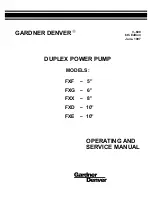
1 600 A00 5H4 | 2014.08
Bosch Power Tools
20
| English
– For thin materials such as sheet metal, switch the orbital
action off.
– For hard materials such as steel, work with low orbital
action.
– For soft materials and when sawing in the direction of the
grain, work with maximum orbital action.
Adjusting the Cutting Angle (see figure C)
For adjustment of precise mitre angles, the base plate has
adjustment notches on the left and right at 0° and 45°.
Swivel the base plate
5
to the desired position according
to the scale
14
. Other mitre angles can be adjusted using a
protractor.
Afterwards, push the base plate
5
to the stop in the direction
of the saw blade
8
.
Tighten the screw
15
again.
The splinter guard
13
can not be inserted for mitre cuts.
Offsetting the Base Plate (see figure C)
For sawing close to edges, the base plate
5
can be offset to
the rear.
Loosen the screw
15
and slide the base plate
5
to the stop
toward the mains cable.
Tighten the screw
15
again.
Sawing with the base plate
5
offset is possible only with a
mitre angle of 0°.The splinter guard
13
may not be used.
Starting Operation
u
Observe correct mains voltage! The voltage of the
power source must agree with the voltage specified
on the nameplate of the machine. Power tools
marked with 230 V can also be operated with 220 V.
Switching On and Off
To start the machine, press the On/Off switch
3
.
To lock the On/Off switch
3
, keep it depressed and push the
lock-on button
1
to the right or left.
To switch off the machine, release the On/Off switch
3
.
When the On/Off switch
3
is locked, press it first and then
release it.
Controlling/Presetting the Stroke Rate
Increasing or reducing the pressure on the On/Off switch 3
enables stepless stroke-rate control of the switched-on
machine.
Light pressure on the On/Off switch
3
results in a low stroke
rate. Increasing the pressure also increases the stroke rate.
When the On/Off switch
3
is locked, it is not possible to
reduce the stroke rate.
With the thumbwheel for stroke rate preselection
2
, the
stroke rate can be preset and changed during operation.
The required stroke rate is dependent on the material and the
working conditions and can be determined by a practical trial.
Reducing the stroke rate is recommended when the saw
blade engages in the material as well as when sawing plastic
and aluminium.
After longer periods of work at low stroke rate, the machine
can heat up considerably. Remove the saw blade from the
machine and allow the machine to cool down by running it for
approx. 3 minutes at maximum stroke rate.
Working Advice
u
Before any work on the machine itself, pull the mains
plug.
u
When working small or thin work pieces, always use a
sturdy support or a saw table (accessory).
Check wood, press boards, building materials, etc. for
foreign objects such as nails, screws or similar, and remove
them, if required.
Contact Protector
The contact protector
9
attached to the casing prevents
accidental touching of the saw blade during the working
procedure and may not be removed.
Plunge Cutting (see figure D)
u
The plunge cutting procedure is only suitable for
treating soft materials such as wood, plaster board or
similar! Do not work metal materials with the plunge
cutting procedure!
Use only short saw blades for plunge cutting. Plunge cutting is
possible only with the mitre angle set at 0°.
Place the machine with the front edge of the base plate
5
on
to the workpiece without the saw blade
8
touching the
workpiece and switch on. For machines with stroke rate
control, select the maximum stroke rate. Firmly hold the
machine against the workpiece and by tilting the machine,
slowly plunge the saw blade into the workpiece.
When the base plate
5
fully lays on the workpiece, continue
sawing along the desired cutting line
Coolant/Lubricant
When sawing metal, coolant/lubricant should be applied
alongside cutting line because of the material heating up.
Maintenance and Service
Maintenance and Cleaning
u
Before any work on the machine itself, pull the mains
plug.
u
For safe and proper working, always keep the machine
and ventilation slots clean.
If the replacement of the supply cord is necessary, this has to
be done by Bosch or an authorized Bosch service agent in
order to avoid a safety hazard.
Clean the saw blade holder regularly. For this, remove the saw
blade from the machine and lightly tap out the machine on a
level surface.
Heavy contamination of the machine can lead to malfunctions.
Therefore, do not saw materials that produce a lot of
dust from below or overhead.
u
In extreme conditions, always use dust extraction as
far as possible. Blow out ventilation slots frequently
and install a residual current device (RCD).
When
working metals, conductive dust can settle in the interior
of the power tool. The total insulation of the power tool can
be impaired.
Lubricate the guide roller
7
occasionally with a drop of oil.
Check the guide roller
7
regularly. If worn, it must be replaced
through an authorised Bosch after-sales service agent.
Manual GST 75 Professional.indd 20
03/09/14 09:36


































